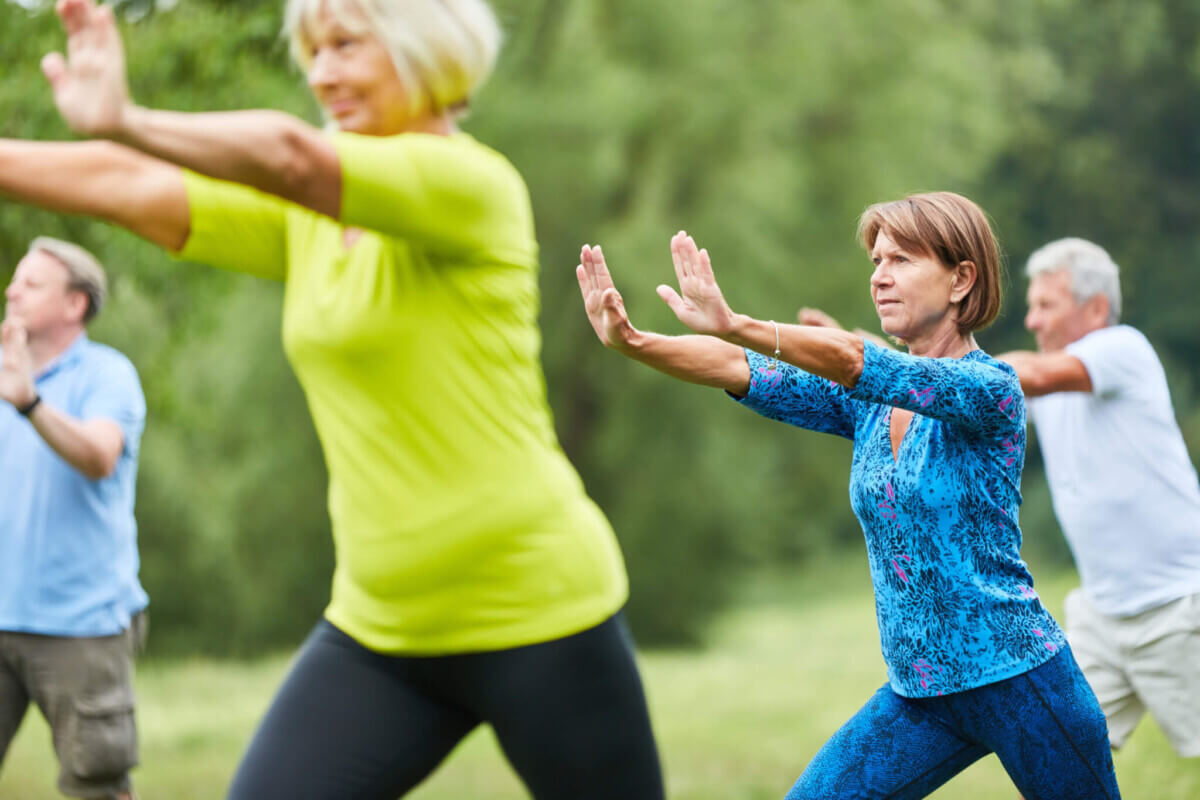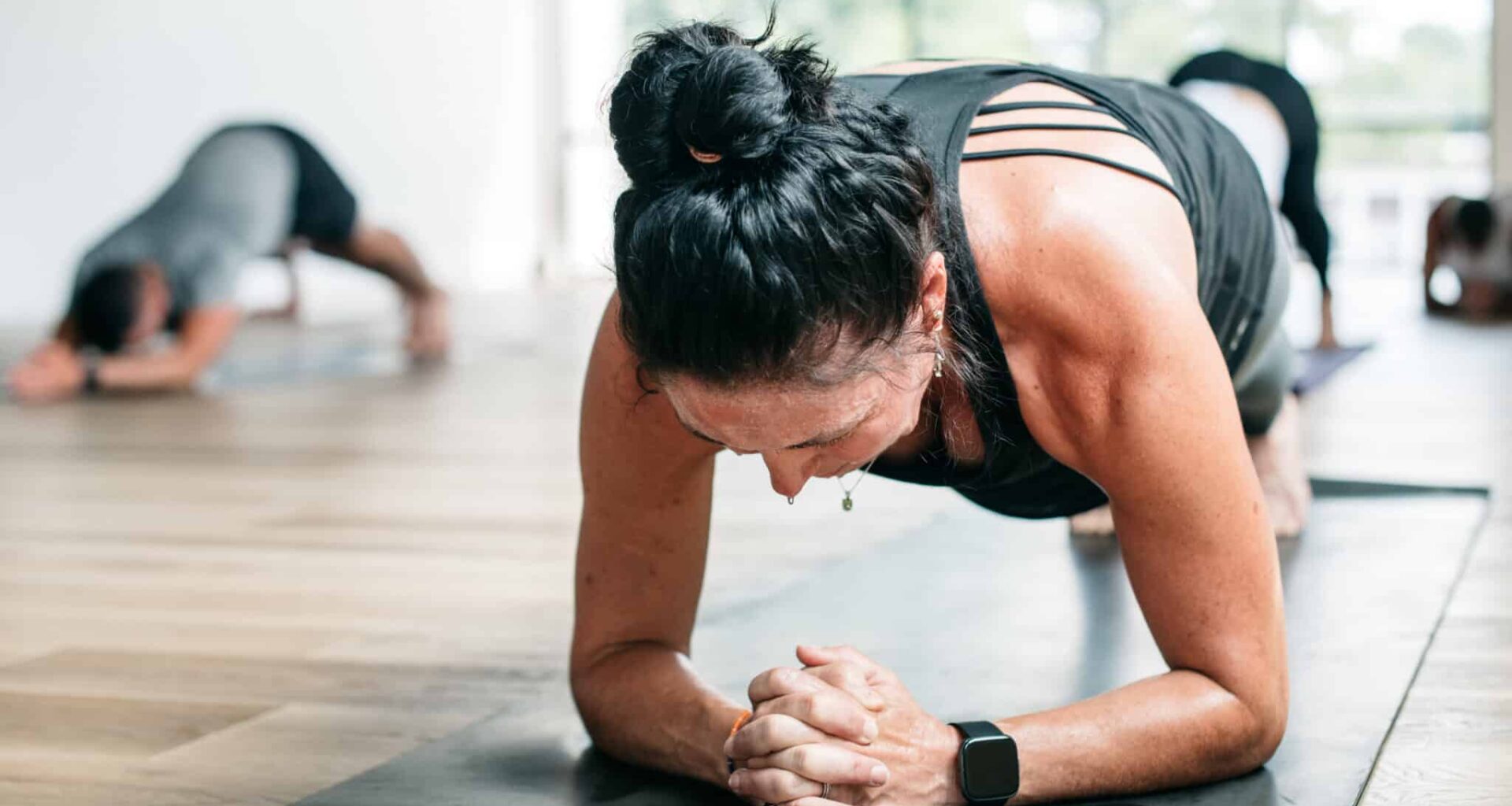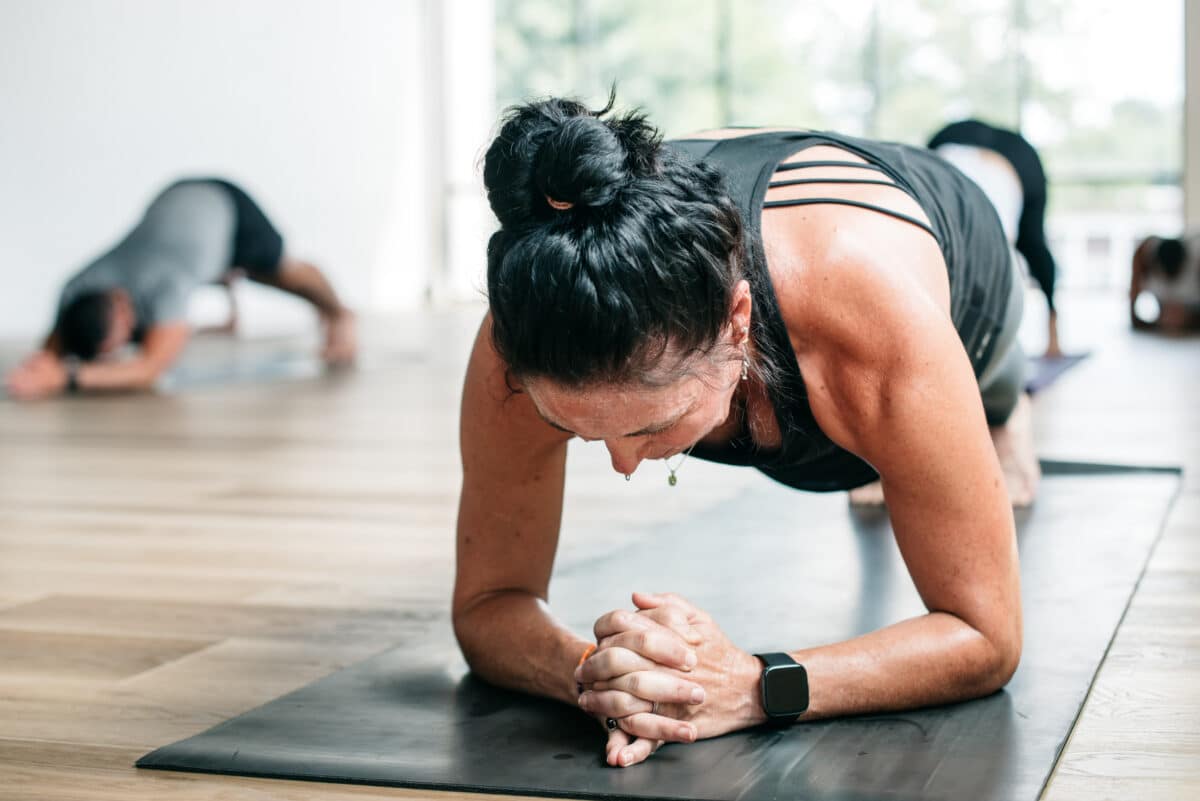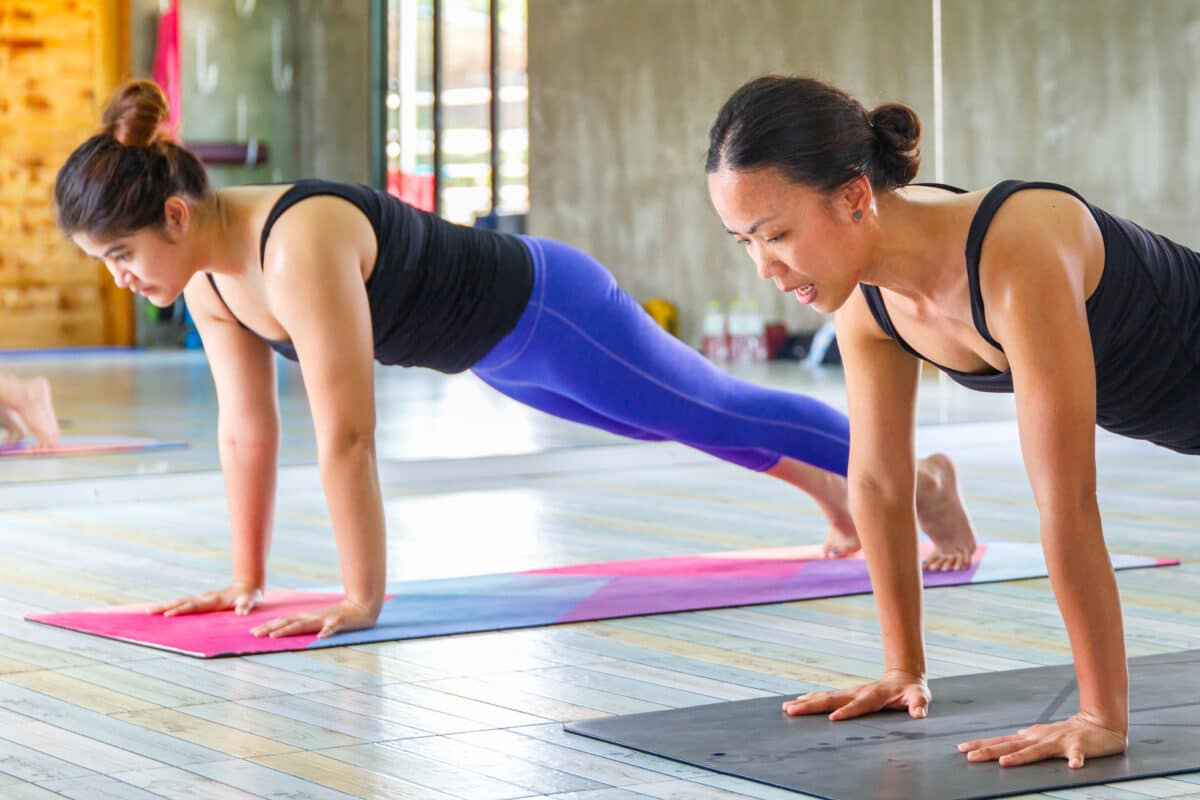(© Leslie Rodrigue – stock.adobe.com)
In A Nutshell
Conventional exercise, like Tai Chi, Pilates, or HIIT, consistently improves blood vessel health in sedentary adults.
Yoga shows mixed effects: older adults may see modest benefits, but results are inconsistent across studies.
Hot yoga offers no added advantage over room-temperature yoga for cardiovascular outcomes.
For heart health, structured aerobic or resistance training appears more reliable than yoga alone.
SHARJAH, United Arab Emirates — Hot yoga may not live up to its hype for heart health after all. A new systematic review comparing yoga and conventional exercise found that structured exercise programs consistently improved blood vessel function, while yoga showed mixed and inconsistent results.
Researchers at the University of Sharjah in the UAE and Manipal Academy of Higher Education in India analyzed 10 studies examining the impact of various physical activities on vascular health in inactive adults. Conventional exercise interventions, including Tai Chi, Pilates, and high-intensity interval training, reliably enhanced measures like endothelial function and arterial stiffness. Yoga programs yielded variable outcomes, with some studies demonstrating modest improvements in specific populations, while others found no significant changes.
The review, published in Advances in Integrative Medicine, challenges popular assumptions about yoga as a cardiovascular intervention, particularly heated varieties like Bikram yoga. While some middle-aged practitioners experienced improved blood vessel dilation after 12 weeks of heated yoga, the practice showed no improvements in arterial stiffness. Moreover, practicing in a 105-degree room provided no additional cardiovascular benefit compared to room temperature.
Performing yoga in a sweltering hot room may not be as beneficial for your heart as believed. (Photo by Gamjai on Shutterstock)
Exercise Produces More Reliable Results
Among the exercise interventions examined, Tai Chi demonstrated significant improvements in endothelial function, the inner lining of blood vessels that regulates blood flow, in postmenopausal women after 24 weeks of practice. Reformer Pilates produced measurable improvements in flow-mediated dilation, a measure of how well arteries expand in response to increased blood flow, even after a single 60-minute session in older adults aged 60 to 69.
High-intensity interval training showed particularly strong effects. One study tested four four-minute running intervals with four-minute rests, repeated twice daily for a week in sedentary young women. This routine reduced arterial stiffness by 11 percent, though researchers noted the training occurred in a cold environment (14 degrees Celsius), which may have enhanced the vascular response. The finding comes from a small, specific population and may not apply broadly.
Activity micro-breaks during prolonged sitting, a popular workplace wellness strategy, produced minimal vascular benefits. Having sedentary workers take three-minute walking breaks or climb stairs every hour for four hours didn’t significantly improve carotid or femoral artery function. Brief, gentle movement interruptions appear insufficient to compensate for prolonged inactivity.
Yoga’s Age-Dependent Effects
The review identified one population where yoga showed some promise: middle-aged and older adults. Practitioners over 40 experienced modest improvements in endothelial function after eight weeks of Bikram yoga, though younger adults in the same study saw no changes. The evidence remains limited given small sample sizes ranging from 13 to 80 participants across studies.
Researchers speculate this age-dependent response relates to baseline vascular function. Older adults typically have more impaired blood vessel health, providing greater room for improvement. Younger sedentary people may have sufficiently healthy arteries that gentle yoga practice can’t meaningfully enhance.
However, even among older practitioners, yoga’s benefits were inconsistent. Some studies showed improved blood vessel function while others found no significant changes in arterial stiffness or compliance, despite two to three yoga sessions weekly for 12 to 24 weeks. Different yoga styles, including Hatha, Bikram, and Vinyasa, produced varying results across studies.
The Hot Yoga Question
One specific finding challenges marketing claims about heated yoga classes. Researchers directly compared Bikram yoga practiced at 105 degrees Fahrenheit versus the same routine at room temperature (73 degrees). After 12 weeks, 54 sedentary adults aged 40 to 60 showed similar outcomes regardless of temperature. Neither group demonstrated significant changes in brachial-ankle pulse wave velocity, which measures how fast blood pressure waves travel through arteries.
Studios often promote heated classes as superior for circulation, claiming warmth helps blood vessels dilate and improves flexibility. The evidence doesn’t support these claims. One study did find that 12 weeks of heated Bikram yoga “improved endothelium-dependent vasodilation in sedentary, middle-aged adults,” but noted “the heated environment did not enhance these vascular adaptations significantly.”
Translation: some vascular improvements occurred with Bikram yoga, but the heat itself provided no additional benefit. And importantly, improvements in vasodilation, a measure of how well blood vessels widen, didn’t correspond to changes in arterial stiffness, another key cardiovascular marker.
Why Intensity Matters
The pattern across studies points to intensity as a critical factor. Conventional exercise creates greater mechanical stress on blood vessel walls through elevated heart rate and blood flow, triggering beneficial adaptations. Yoga’s gentler movements may simply not provide enough stimulus to remodel arterial function, particularly in younger, sedentary adults.
This doesn’t mean yoga lacks value. Middle-aged and older practitioners may see modest vascular benefits, and yoga offers other documented advantages including improved balance, flexibility, and stress reduction. But for sedentary individuals primarily concerned with cardiovascular health, structured exercise programs appear more effective.
Tai Chi, which combines slow, flowing movements with mindfulness elements similar to yoga, produced more consistent vascular improvements than yoga in the studies examined. This suggests that movement quality, intensity, and duration all contribute to cardiovascular adaptations beyond any meditative or stress-reduction components.

What This Means for Sedentary Adults
For inactive adults genuinely interested in improving cardiovascular health through movement, this review offers clear guidance. Conventional exercise, particularly supervised aerobic or resistance training, produces more consistent and reliable vascular improvements than yoga. Tai Chi and Pilates also show promise, especially for older adults who may find high-intensity workouts challenging or inaccessible.
The review’s authors acknowledge several limitations. Most included studies had small sample sizes, and intervention durations varied widely from single sessions to six-month programs, making direct comparisons difficult. Few studies included long-term follow-up to determine whether vascular improvements persisted after interventions ended. Some studies showed critical or moderate risk of bias in domains including randomization, missing data, and selective reporting.
Additionally, no studies directly compared different yoga styles and exercise modalities within the same population. Future research with larger samples and standardized protocols would help clarify which interventions work best for specific populations.
Still, the pattern across studies is consistent enough to inform physical activity choices. For sedentary adults looking to protect their cardiovascular health, conventional exercise works more reliably than yoga. Yoga may complement that approach, especially for older individuals, but shouldn’t substitute for activities that elevate heart rate, increase blood flow, and create meaningful mechanical stress on the vascular system.
Disclaimer: This article is for general informational purposes only and should not be taken as medical advice. Consult a healthcare professional before beginning new exercise programs.
Paper Summary
Methodology
Researchers conducted a systematic review following PRISMA guidelines and registered their protocol with PROSPERO. They searched PubMed, Scopus, and Web of Science databases through February 2025 for randomized controlled trials, crossover trials, and non-randomized studies comparing yoga and exercise interventions in sedentary adults. Studies had to assess vascular function using ultrasound techniques like flow-mediated dilation or pulse wave velocity. Two independent reviewers screened 1,166 initial records, ultimately including 10 studies that met all criteria. The review examined yoga interventions including Hatha, Bikram, and Vinyasa styles, as well as exercise interventions including Tai Chi, Reformer Pilates, high-intensity interval training, and activity breaks during prolonged sitting.
Results
Ten studies met inclusion criteria with sample sizes ranging from 13 to 80 participants. Yoga interventions showed mixed results, with some improvement in endothelial function among older adults but inconsistent effects on arterial stiffness. Heated and room-temperature Bikram yoga produced no significant changes in pulse wave velocity after 12 weeks, though some studies showed improved vasodilation in middle-aged adults. Exercise interventions consistently improved flow-mediated dilation and reduced arterial stiffness. Tai Chi and Reformer Pilates significantly enhanced endothelial function in sedentary adults. High-intensity interval training in cold environments reduced arterial stiffness by 11 percent. Activity micro-breaks during prolonged sitting yielded limited vascular benefits. Most studies had intervention durations between eight and 24 weeks.
Limitations
The review acknowledges several constraints affecting interpretation. All included studies had relatively small sample sizes, limiting statistical power and generalizability. Heterogeneous methodologies and variable intervention durations from single sessions to 24-week programs made direct comparisons difficult. Most studies lacked long-term follow-up to assess sustainability of vascular improvements. Some studies showed critical or moderate risk of bias in domains including randomization, missing data, and selective reporting. The review included predominantly studies from the United States for yoga interventions and multiple countries for exercise studies, potentially limiting geographic generalizability. No studies directly compared different yoga styles and exercise modalities within the same population.
Funding and Disclosures
The research did not receive any specific grant from funding agencies in the public, commercial, or not-for-profit sectors. The authors declared no conflicts of interest. The review protocol was registered in PROSPERO under registration number CRD420250655130.
Publication Information
Paramashiva PS, Sukumar S, Shettigar D, Kadavigere R, Pradhan A, Panakkal NC, Dkhar W, Vaishali K, Chandrasekaran B, Palaniswamy HP, Ravichandran S, Muthu SS, Kamath K, Felix HJ, Shazli A, David LR. “Comparing the effects of yoga and exercise on vascular function: A systematic review.” Advances in Integrative Medicine, Vol. 12, Issue 4 (December 2025)



